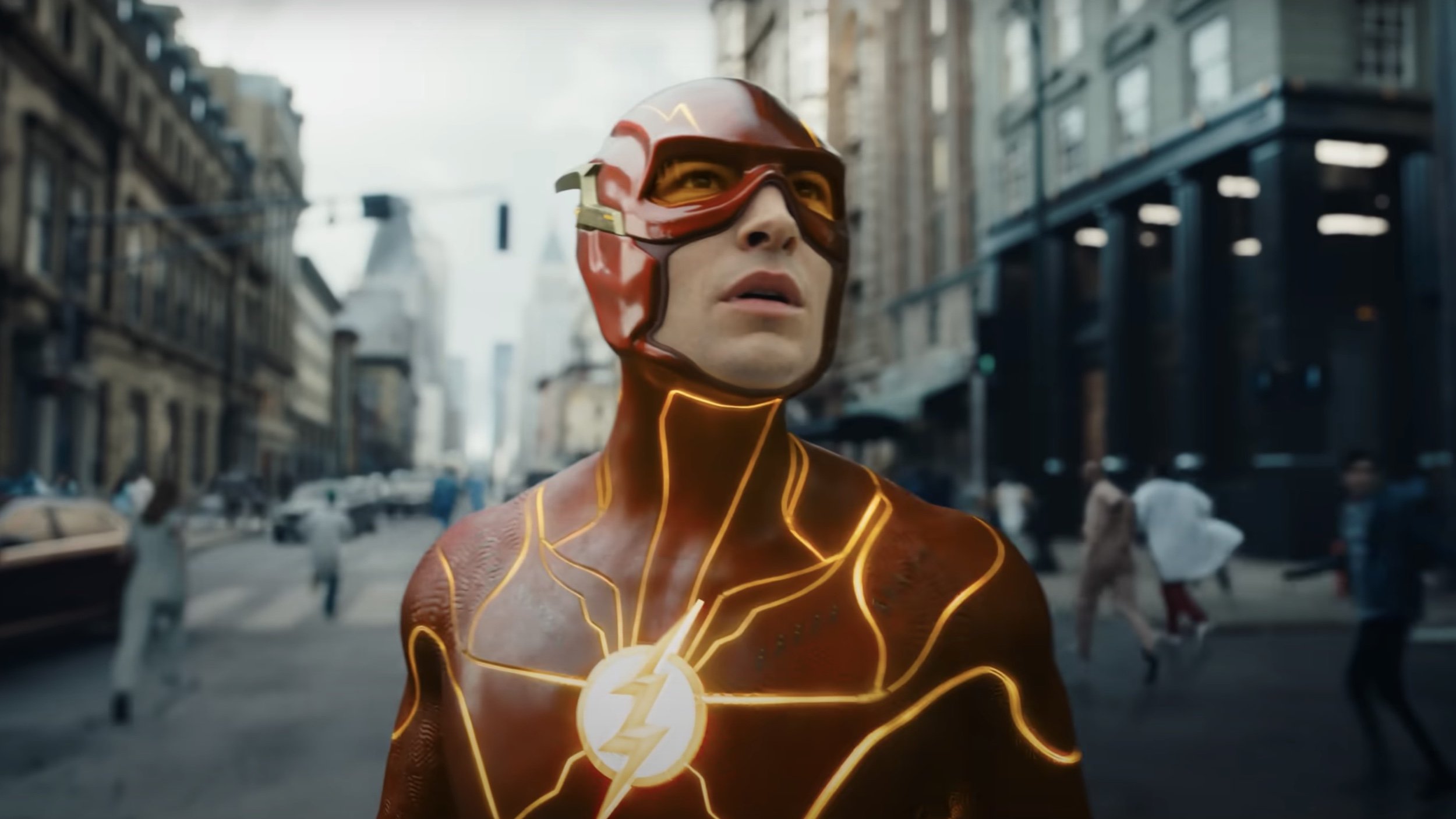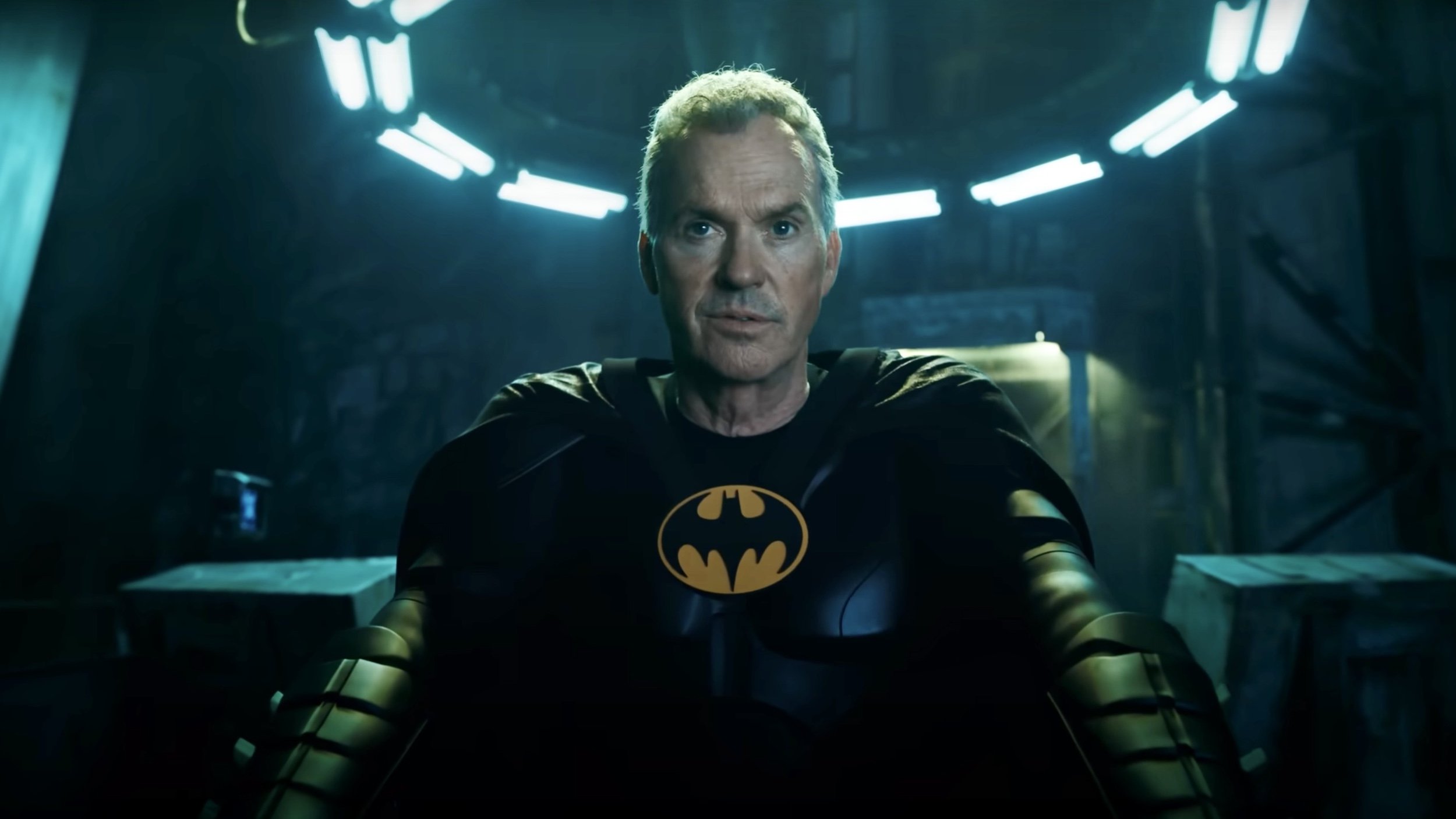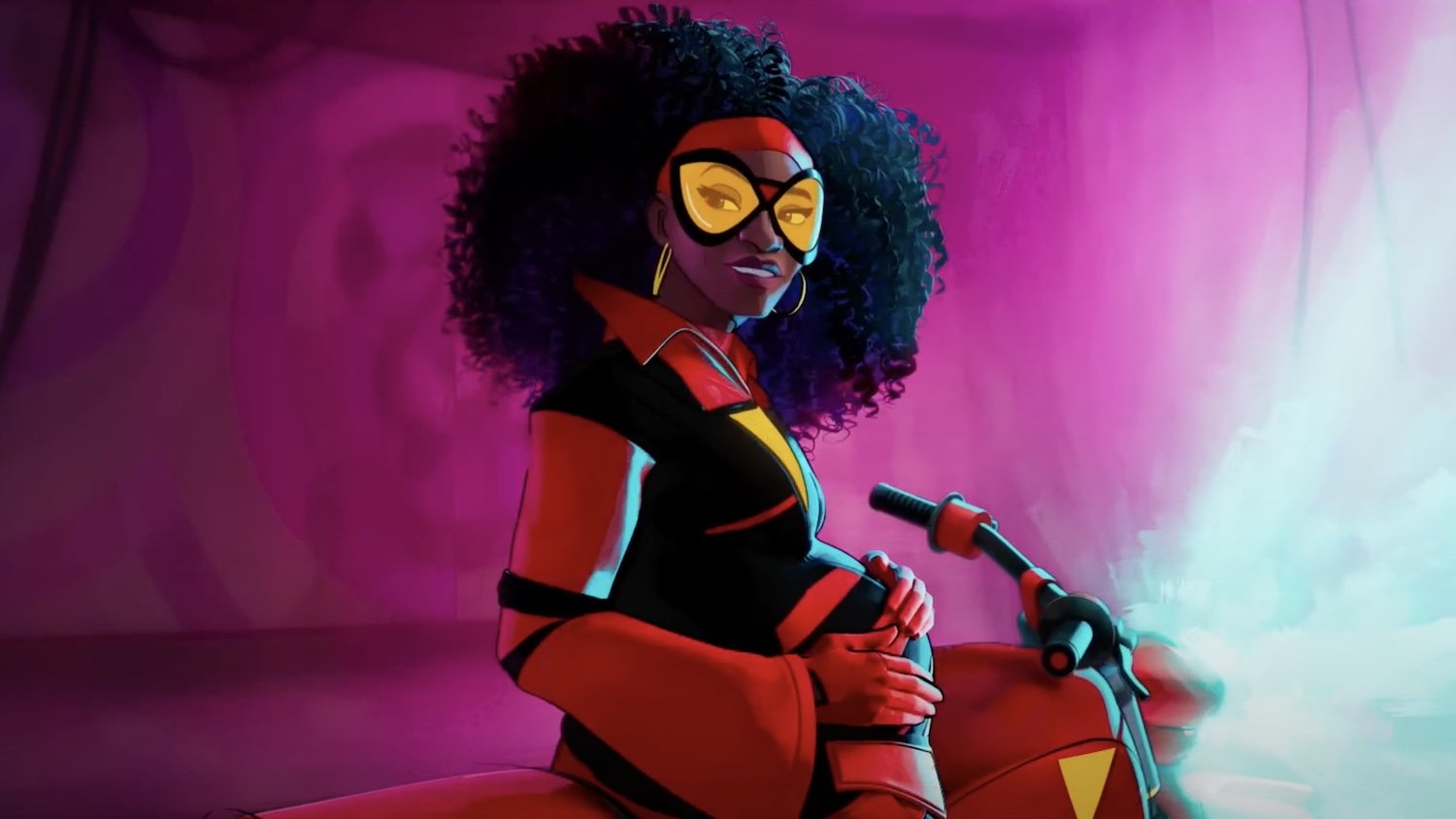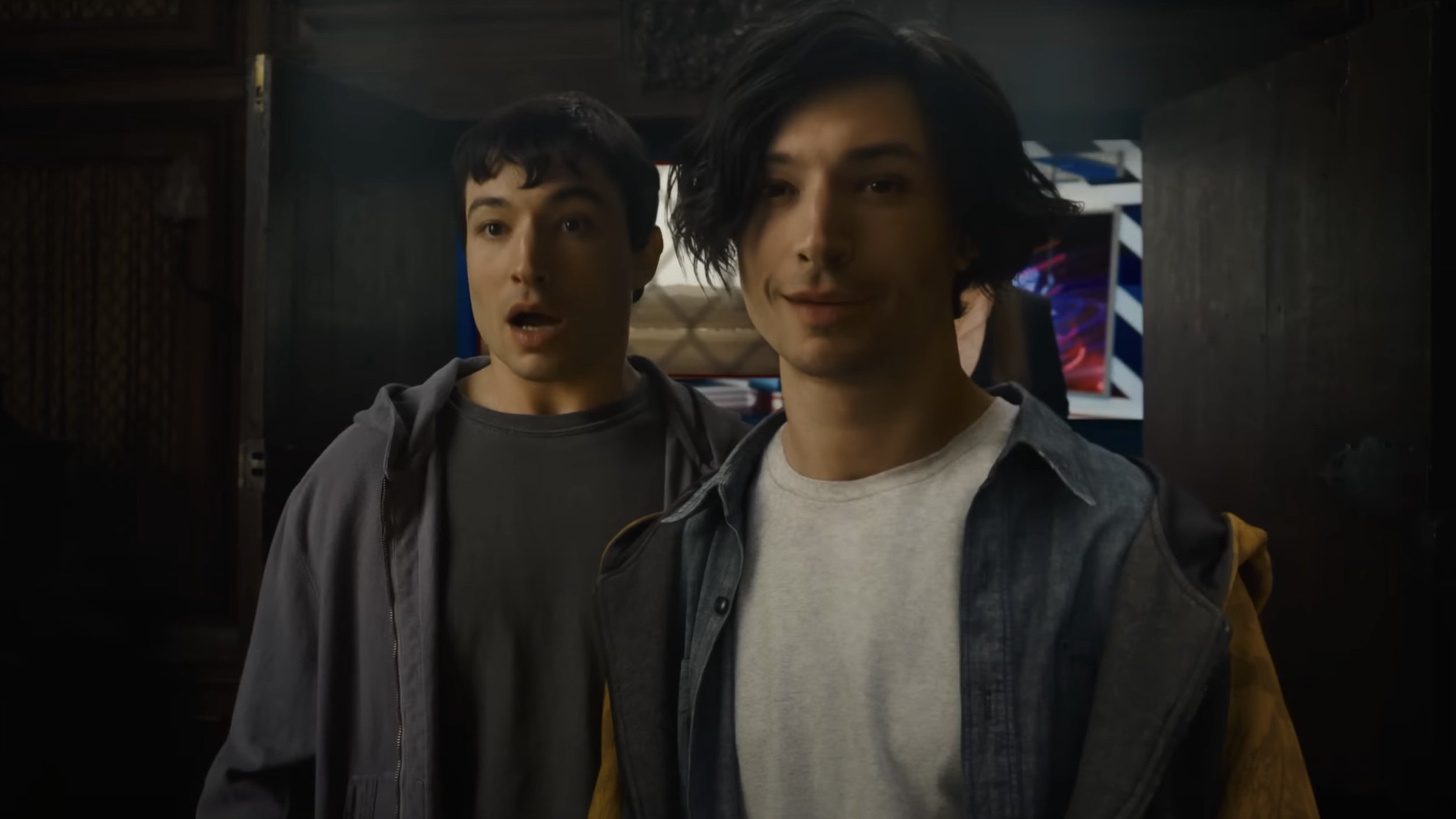In ‘The Flash,’ Hollywood Is Running to Stand Still
This post contains spoilers for The Flash, in theaters today.
There’s a recurring image in The Flash of the floppy-armed scarlet speedster, Barry Allen, running in place to turn back time. He’s in a CG arena called the Chronobowl, where’s he’s surrounded by DC-branded likenesses while running and remembering when (the lowest form of conversation, Tony Soprano once called it). In this way, treading “multiverse” in The Flash comes across like an unintended symbol of how little some things have changed in Hollywood, both on and offscreen.
Ten years after Man of Steel, Michael Shannon’s villainous Zod is still after the same darn codex in a super-person’s DNA. Over three decades after his last appearance in the hero’s cape and cowl, Michael Keaton (#innocent) is still firing off 1989 one-liners like, “I’m Batman,” and, “Let’s get nuts.” The Flash digitally de-ages Nicolas Cage (as a meta movie news joke), and it digitally resurrects Christopher Reeve and George Reeves, making them look like video game characters in a past that will never die. Watch for falling man-babies in the first reel.
Racing Against Superman (and Time)
The Superman necrophilia in The Flash is interesting because Richard Donner’s 1978 film actually created the framework for the modern superhero blockbuster. In its climax, however, Superman: The Movie is less about Supes saving the world (which he’s already done) and more about him saving the woman he loves. The movie puts character above spectacle, or at least grounds its spectacle in character.
In the third act, when Superman has to decide which missile to head off first, that choice is informed by his relationship with Lois Lane (Margot Kidder) and the last-minute intervention of Miss Teschmacher (Valerie Perrine), who frees him from kryptonite chains on the condition that he save her mom in Hackensack, New Jersey. Substituting bombs for missiles, The Dark Knight would confront Batman with a similar dilemma as he had to choose between the woman he loved and his duty to the greater good.
To his credit, Barry Allen has good, character-based intentions in The Flash. He wants to save his mom, just as Miss Teschmacher does, and later, he wants to save Batman and Supergirl (Sasha Calle). Yet this creates a more abstract problem where Barry must save the multiverse.
In reality, he can’t even save Hollywood, and neither, perhaps, can the superhero genre anymore. And so, instead of looking forward, what we see in The Flash is show business looking backward to a time when it had more cultural relevance. It’s a movie that shows the dangers of nostalgia — but it feels like it wants to have its Chronobowl and eat it, too, so to speak. Because it’s also a movie where nostalgia porn becomes a physical act as the metahuman Barry attempts to turn back the clock by running in place.
While it’s giving us Superman’s mythic origin, Donner’s film likewise makes us believe a demigod can fly fast enough and emote hard enough to spin the globe and clock backward. In Superman: The Movie, we see the Hoover Dam magically un-flood, and we can imagine the broken Hollywood sign putting itself back together as well. There’s your fantasy wish fulfillment: California’s coastline never crumbled, nor is it now crumbling, here in the summer of 2023.
Or is it? At a time when superhero fatigue has definitely set in, and even former comic book writers like Alan Moore have accused the genre of infantilization (not to mention, facilitating fascism), Superman: The Movie remains a corny yet aspirational beacon. After forty-five years, the film still has more heart and humanity than any plastic face reproduced by hollow effects inside the Chronobowl.
If only The Flash could run that fast. As it is, he’s stuck playing catch-up with a similar plot device in a digital wasteland. The movie sinks deep into the uncanny valley at the end, treating us to a cavalcade of cameos that look about as convincing as the Burly Brawl clones in The Matrix Reloaded. I walked out of it feeling like it may be the last superhero film I ever see.
The Hamster Wheel to Hell
Between the scattershot DC Extended Universe, the increasingly lackluster Marvel Cinematic Universe, and the burgeoning yet boring genre of the legacy sequel or “requel,” it really does feel like all of Tinseltown is on the hamster wheel to hell. At this point, we’re just running in place with the Flash, or running to standstill, like in that old U2 song (which was still a relatively fresh sing-along for ‘80s teens back when Michael Keaton was first in theaters as Batman).
Hollywood’s superficial progressiveness is right there with us on the hamster wheel. Since 2020, when actor Ezra Miller was caught on video choking a woman outside a bar in Iceland, the star of The Flash has been arrested for harassment and assault and accused of grooming and burglary, according to People.
As enlightened as the studios would have us believe their commercial art is, there is some serious whiplash to be had this month if you read Maureen Ryan’s new industry exposé, Burn It Down, and then watch The Flash.
Among other things, the book weaves in a 2022 Elle interview from Issa Rae, who can currently be heard in theaters as Spider-Woman’s voice in Across the Spider-Verse. Rae says:
“I’m gonna be real, the stuff that’s happening with Ezra Miller is, to me, a microcosm of Hollywood. There’s this person who’s a repeat offender, who’s been behaving atrociously, and as opposed to shutting them down and shutting the production down, there’s an effort to save the movie and them. That is a clear example of the lengths that Hollywood will go to to save itself and to protect offenders.”
The irony is, Rae’s own superhero film — one of this summer’s biggest success stories, both critically and commercially — hasn’t been without controversy, either. Across the Spider-Verse came under the microscope in a recent Vulture article, where crew members alleged that they were subjected to adverse working conditions, putting in “11 hours a day, 70 hours a week” on a project that was like “a building without a blueprint.” One claimed that “over 100 people left the project,” where morale was reportedly low, and the animators were left in a time crunch not unlike the one that gave 30% of the Toy Story 2 team repetitive stress injuries (per /Film).
In response to all this, Amy Pascal, the producer and studio exec whose racist email comments about President Barack Obama were released as part of the Sony Pictures hack in 2014 (via The Guardian), seemed unsympathetic, saying, “I guess, Welcome to making a movie.” If you’ll forgive the pun, it’s that attitude — the idea that some whiners just can’t hack it — that may be to blame for the unimproved working conditions in a business where the show apparently must go on, no matter how many people get hurt in the process.
Not that anyone would notice or remember long with all the misdirection going on. Another part in Ryan’s book talks about how “Hollywood employs its considerable public relations and image management strategies” to sweep things under the rug better than any industry. The true movie magic is how it functions as a living PR machine, optimized to sell tickets and make itself look good, with talented actors and all the other tricks of the trade.
The Ezra Miller and David Zaslav of It All
More than one Barry Allen inhabits The Flash, and Ezra Miller also uses plural pronouns: they/them. Yes, Miller gives a good enough performance that you could almost forget about their unheroic actions in real life, similar to the fans on the street at the start of the film who scream, “I love you!” to Barry as the title comes up. The thing is, Miller is an actor. It’s their job to make us think they’re someone they’re not.
As clips circulated this week of the actor walking the red carpet for The Flash, social media was flooded with comments comparing them to the evil Superman analog, Homelander, in The Boys. Onscreen, Barry reminds us of mitigating circumstances by telling someone he’s saved, “I understand that these events can be psychologically scarring. You should seek the services of a mental health professional.” However, if there’s one thing the assault arrest of fellow superhero movie star Jonathan Majors has shown this year, it’s that there are still some larger institutional problems at play, which keep Hollywood from making the real systemic change necessary to weed out abuse before it ascends to the top.
In the background of all this discourse is the ongoing Writers Guild of America strike, juxtaposed with the 100th-anniversary fire sale of Warner Bros., the studio behind The Flash. By now, CEO David Zaslav’s name should be familiar to anyone who pays attention to the industry side of movie news. According to Burn It Down, Zaslav took home $247 million in 2021, just before Warner Bros. merged with his reality-show dump, Discovery, and he assumed control of the studio. Given that he comes from the world of reality TV, not movies, it’s very sobering to hear Zaslav on CNBC, speaking the business language of Hollywood with talk of “IP,” “content,” and “cash flow for growth.”
He calls the studio a “fantastic collection of assets,” but not all those assets are worth preserving. This is the same guy who has been shelving finished films like Batgirl as tax write-offs while gutting Turner Classic Movies with layoffs and removing HBO original shows like Westworld from the network’s streaming service. It’s now called Max, not HBO Max anymore, thank you very little. Even the Home Box Office name wasn’t worth preserving.
Too bad the streaming bubble may have already burst. When The Flash hits Max, will it be an event, or will it be more like the DC Extended Universe is going quietly into the dust bin of history? My bet’s on the latter, though you never can tell.
For much of its runtime, The Flash does hold itself together as an enjoyable experience, but words like “going” and “runtime” also imply motion, and I’m not sure this busy blockbuster is getting us anywhere. Offscreen, as onscreen, you can still have a picture with the illusion of motion, where things ultimately go nowhere, no matter how hard and fast and Flash-like they run.




